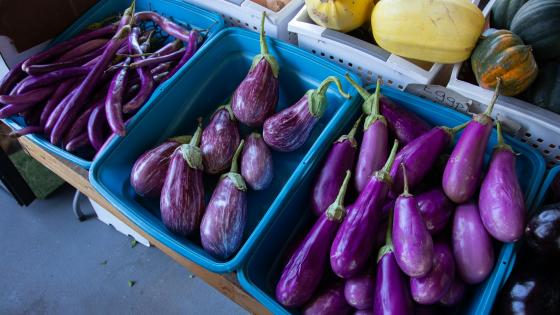
Eggplant
Eggplant
Eggplant is typically a low-volume crop in Kentucky and is used more to diversify offerings at farmers market booths or CSA’s. However, opportunities for bulk growth may be available by selling to restaurants and supermarkets. There are many different cultivars of eggplant that vary in shape and color, so growers should consider their market’s needs before selecting a variety.
Key Requirements
| Land | Low |
| Labor | High |
| Capital | Medium |
Take the HortBizQuiz to see how much Land, Labor, and Capital you have for your operation.
Markets
- Direct to Consumer
- Restaurants
- Specialty Grocer
Pest & Disease
Flea beetles can be a major pest of eggplant, so many growers will cover rows with row cover until plants are large enough to tolerate damage. Other insect and disease pressure is similar to tomatoes, although eggplants do seem to be more tolerant of these pressures. Good management involves crop rotation, sanitation and good drainage via raised beds.
Costs and returns are presented as estimates. They will vary based on your farm and markets.
Costs and returns are presented as estimates. They will vary based on your farm and markets.
Challenges
- Labor needs are high due to trellising, plastic mulch/irrigation installation, and the need for frequent harvesting.
- Eggplants need to be cleaned before storage.
- More sensitive to low temperatures than tomatoes and peppers.
Opportunities
- As the growth of Asian cuisine continues, there is more demand for crops such as eggplant.
- Relatively short days-to-harvest window.
- Eggplants have a deep taproot, making them tolerant of drought conditions.